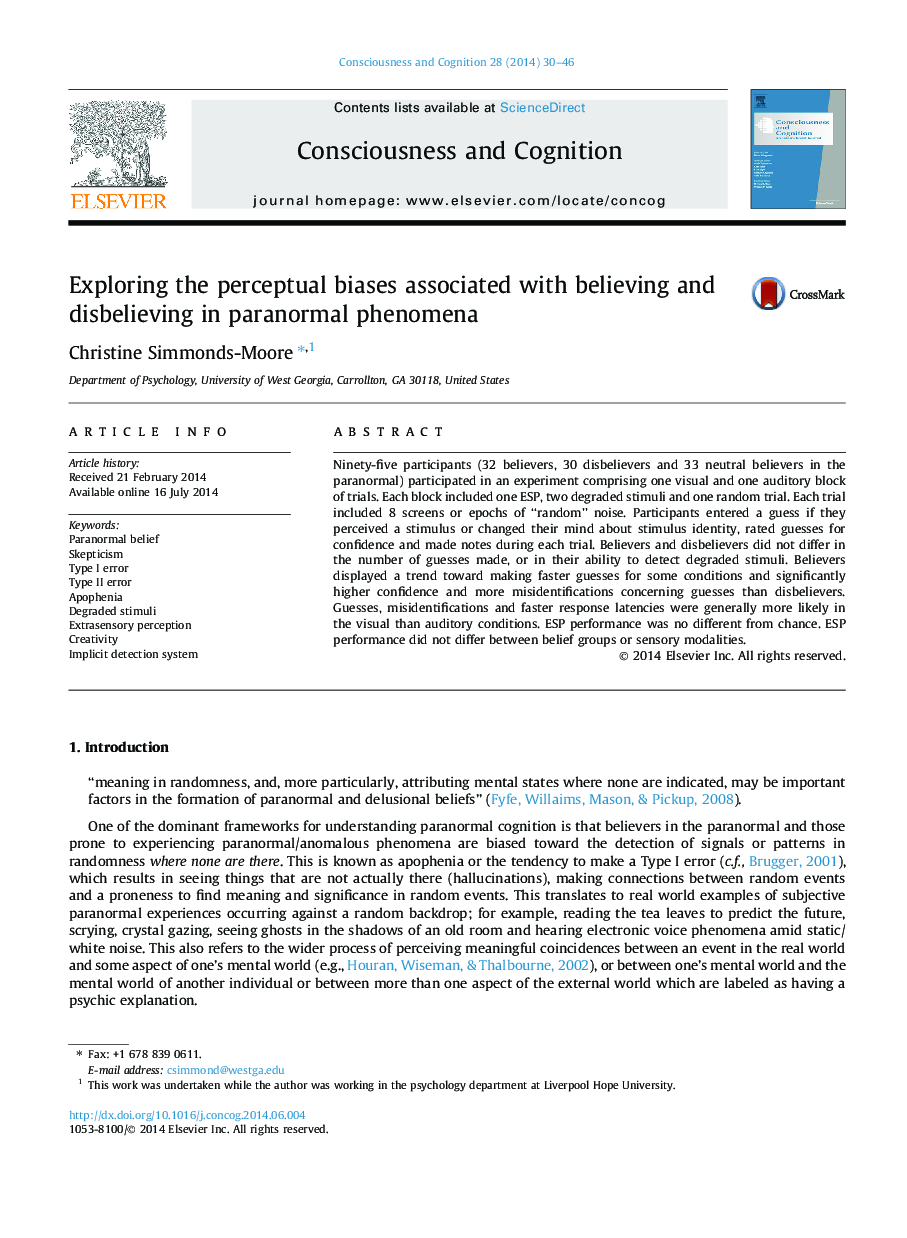| Article ID | Journal | Published Year | Pages | File Type |
|---|---|---|---|---|
| 7289832 | Consciousness and Cognition | 2014 | 17 Pages |
Abstract
Ninety-five participants (32 believers, 30 disbelievers and 33 neutral believers in the paranormal) participated in an experiment comprising one visual and one auditory block of trials. Each block included one ESP, two degraded stimuli and one random trial. Each trial included 8 screens or epochs of “random” noise. Participants entered a guess if they perceived a stimulus or changed their mind about stimulus identity, rated guesses for confidence and made notes during each trial. Believers and disbelievers did not differ in the number of guesses made, or in their ability to detect degraded stimuli. Believers displayed a trend toward making faster guesses for some conditions and significantly higher confidence and more misidentifications concerning guesses than disbelievers. Guesses, misidentifications and faster response latencies were generally more likely in the visual than auditory conditions. ESP performance was no different from chance. ESP performance did not differ between belief groups or sensory modalities.
Related Topics
Life Sciences
Neuroscience
Cognitive Neuroscience
Authors
Christine Simmonds-Moore,
